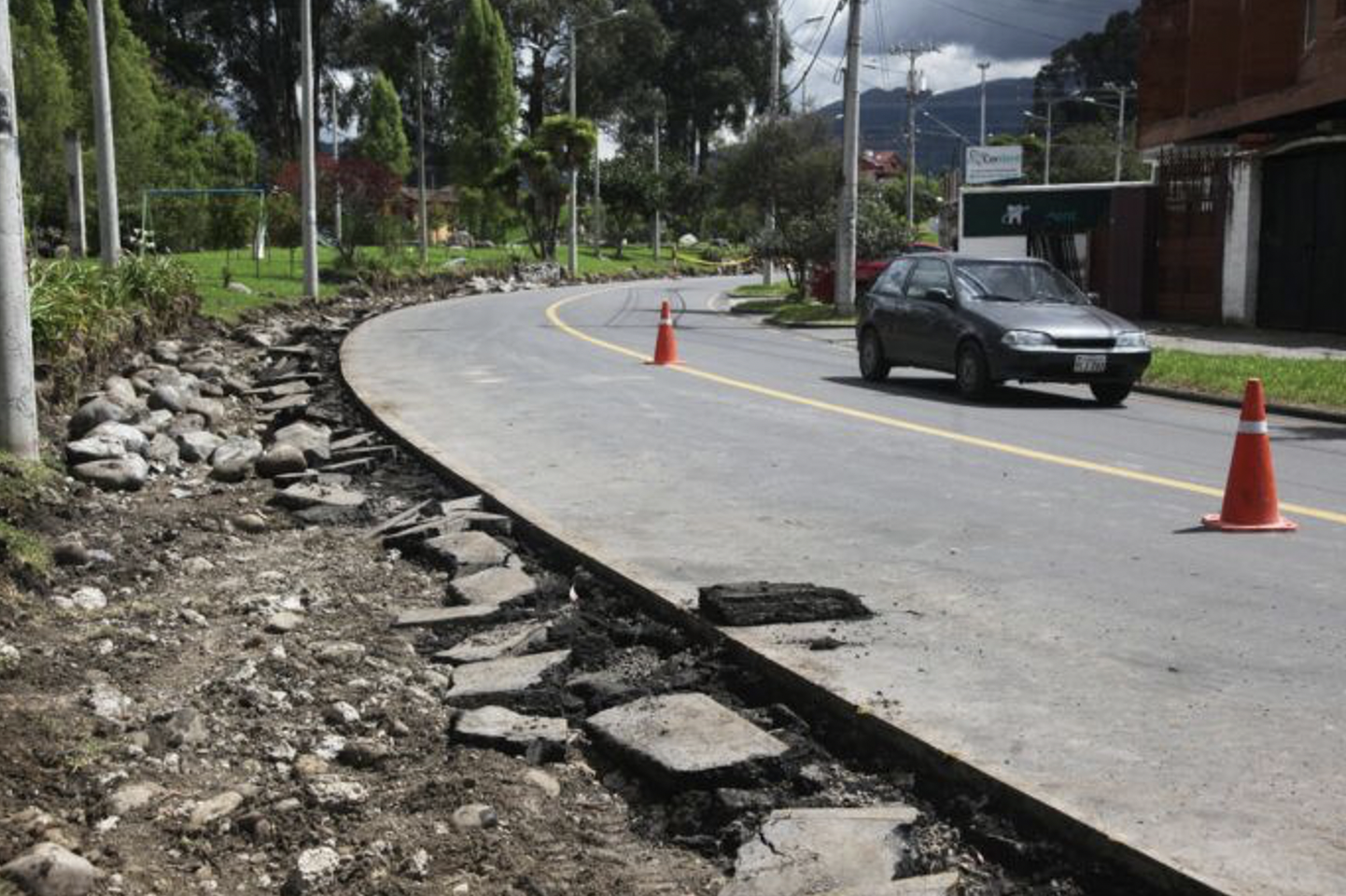A little over a week ago, work began to build the largest bicycle lane network that Cuenca will have, and comments for and against how the project is conceived and how it has been applied continue to be generated from various sectors.
In the first instance, those who presented their opinions were the owners of businesses and condominiums on Primero de Mayo Avenue. A group of neighbors, on the eve of the start of the works, demanded that the Municipality of Cuenca tell then the route that the bike path will have.
According to the designs, the path for cyclists will be located on the avenue. The inhabitants of the area expressed their disagreement and their opinions that the bike path can work on the trails that are next to the banks of the Yanuncay River.
However, the General Coordination of Mobility of the municipal corporation, through its coordinator, Boris Palacios, defended the design that was prepared based on the consultancy that was carried out in the administration of Marcelo Cabrera.
According to Palacios, although the paths were used by both pedestrians and cyclists, they were designed when the number of users was less than what is seen now.
“It is no longer possible to share these trails that were originally conceived in this way, rather the issue has been set on a bike lane that must share technical characteristics… The bike lane must be 1.20 meters wide for each sense of the ring road and it will have a separator. I think it is important to already have a defined infrastructure for them,” said Palacios.
The Mobility coordinator added that, in the case of Primero de Mayo Avenue, where there have been more complaints from the locals, the two lanes will be maintained, whose section of road will be 7.80 meters, which will allow the continued use of the road.
Destruction of sidewalks
At first, unlike the Primero de Mayo group, the residents of Avenida 27 de Febrero, to a large extent, agreed with the construction of the bike path. However, after the work that began a few days ago, discontent has begun.
To comply with the layout of the cyclists’ path and build the new spaces that will accompany it, the contractors broke the sidewalks that are next to the green area of the Yanuncay River and removed the recreational equipment that made up the linear park.
“They removed the playground equipment, and we asked the contractor what they were going to do, and they told us that they were going to build a plaza and put bathrooms. Why waste resources, why make a concrete space where children go to play,” said Rosalba Bisanti, who has lived in front of the linear park for 29 years.
Another claim that is becoming a constant is the destruction of the sidewalks of Avenida 27 de Febrero. Three months ago, a section was fixed that has now been destroyed by the bike lane project.
Due to this situation, the president of the Supervision Commission of the Cuenca Cantonal Council, Alfredo Aguilar, reported that he will request a special examination of the construction of the sidewalks that were destroyed from the State Comptroller General’s Office.
Aguilar said that he was not against the construction of the bicycle lanes, however, he sees a lack of planning that is “costing dearly,” first due to the destruction of the sidewalks and secondly because of the work that began at the same time on Avenida Primero de Mayo and Avenida 27 de Febrero.
“Doing 13.5 kilometers of bike lanes at the same time is really a lack of judgment and planning. This should have been done in phases, but of course, surely since two years have passed and we do not see a single work, then the desperation is to show that something is being done,” said Aguilar.
For the moment, the works began to a greater extent in the sector between Tres Puentes and Avenida 12 de Octubre, and on Avenida 27 de Febrero.
The other major point, located at the intersection of Loja Avenue with Primero de Mayo Avenue, which should also be starting, is pending until the technical authorizations are fulfilled, according to Boris Palacios.
Active mobility with a delay of 10 years
Daniel Orellana, Director of the LlactaLAB research group at the University of Cuenca, feels the bicycle lanes project meets the basic mobility requirements. The researcher also believes that the layout next to the roads responds to the need for a mobility infrastructure.
“You cannot implement mobility infrastructure within the roads because we are going to generate many conflicts and put pedestrians at risk… There is also an environmental reason. We have just had a tough winter season that reminds us of how badly we are treating our rivers and our banks,” said Orellana.
He says that with the implementation of the bicycle lanes Cuenca gradually recovers the spaces for active mobility, whose infrastructure is at least 10 years behind schedule.
The plan
The bike lane network will start at Primero de Mayo avenue and will continue towards 27 de Febrero and Max Uhle avenues and will reach the Machángara river.
The estimates are that around $8.0 million will be invested in the construction of the 13.5 kilometers of the bicycle lane network. A total of 42 contracts were awarded for the construction and contractors will have 90 days to complete the work.
In addition to the bicycle lanes, other recreational spaces will be built that will be located next to the road infrastructure.
The objective of the mobility departments of the Municipality, is for Cuenca to have a total of 125 kilometers of bicycle lanes throughout the city.
According to estimates by LlactaLAB, between 6 and 7% of people in the city move by bicycle, compared to 35% who move by private transport. That’s compared to a 2015 study by LlactaLAB that at the time said only 2% used a bicycle to get around Cuenca.


0 Comments